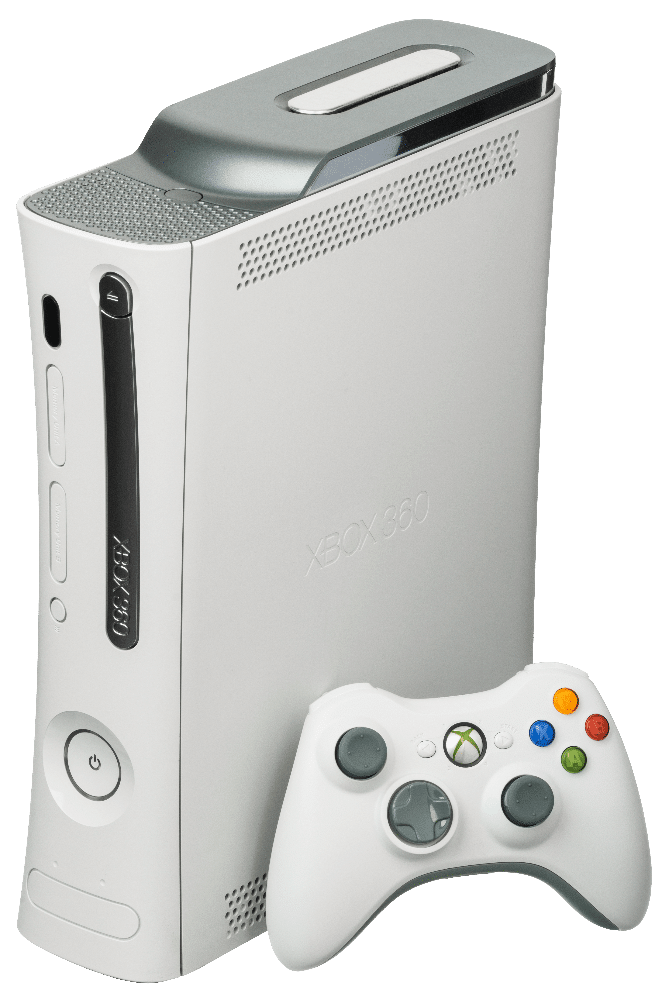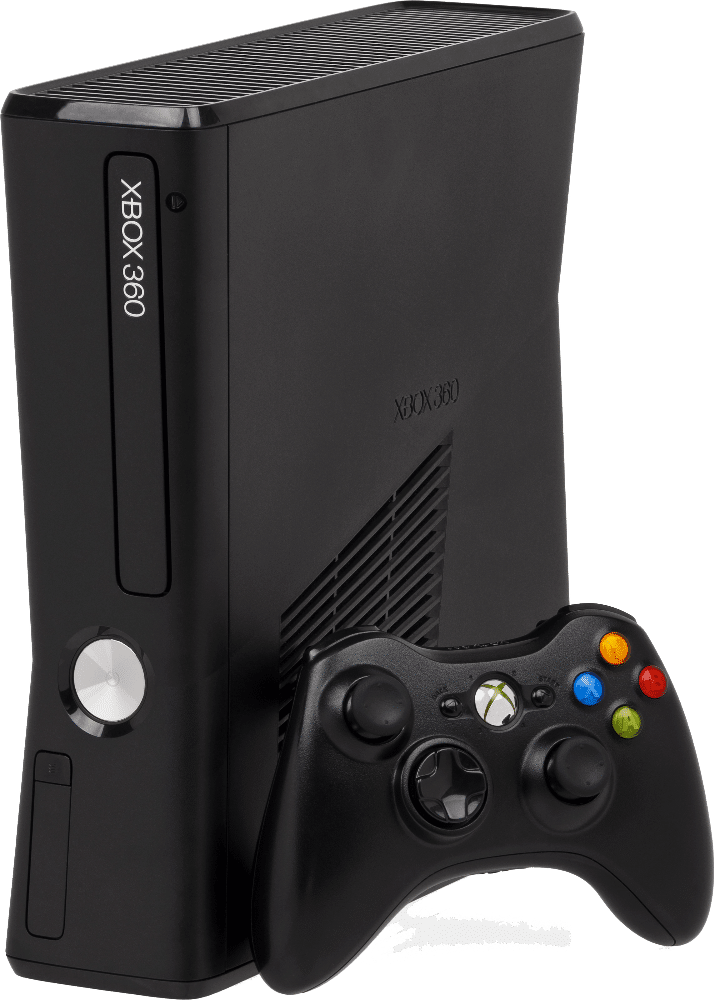


The Xbox 360 was Microsoft’s second home video game console, released on November 22, 2005, and part of the seventh generation of consoles. It competed primarily against the Sony PlayStation 3 and Nintendo Wii. The console was extremely influential for its focus on digital media and online multiplayer gaming via Xbox Live.
Features
- Hardware: The Xbox 360 featured a custom triple-core 3.2 GHz IBM PowerPC CPU and a 500 MHz ATI (now AMD) GPU. It was the first seventh-generation console to launch and sold out quickly in most regions.
- Controller: It was released with both wired and wireless controllers, which featured improved ergonomics over the original Xbox “Duke” controller. The design was so well-regarded that it became a standard for PC gaming.
- Xbox Live: The console expanded significantly on the Xbox Live service. It introduced a tiered subscription model with free “Silver” and paid “Gold” options, allowing for cross-game chat, and an updated Marketplace for downloading games and media.
- Kinect: In 2010, Microsoft released Kinect, a motion-sensing peripheral that used a camera to track player movement. It became the fastest-selling consumer electronic device in history and extended the console’s lifespan.
- Multimedia hub: The Xbox 360 was designed as a “living-room computing environment,” allowing users to stream and download movies, TV shows, and music in addition to playing games.
Notorious issues: The Red Ring of Death (RRoD)
Early versions of the
Xbox 360 were plagued by an alarmingly high hardware failure rate, which became known as the “Red Ring of Death”.
- Cause: Three flashing red lights around the power button indicated a “General Hardware Failure”. The issue stemmed from the cracking of lead-free solder joints under the GPU due to thermal stress.
- Cost: This technical crisis was extremely damaging for Microsoft and cost the company over $1 billion to repair and replace consoles.
- Resolution: Microsoft was able to resolve the issue with later hardware revisions, such as the Xbox 360 S and E models.
Hardware revisions
Microsoft released two major hardware revisions during the console’s lifespan to address the RRoD and other issues.
- Xbox 360 S (Slim): Launched in 2010, this model was smaller, quieter, and featured a redesigned motherboard to prevent overheating. It included built-in Wi-Fi and a proprietary port for the Kinect sensor.
- Xbox 360 E: Released in 2013, the final revision featured a case similar to the upcoming Xbox One but had some ports removed.
Popular games
The Xbox 360 had a massive library of successful games, including many exclusive and third-party titles.
- Halo 3 and Halo 4: The flagship exclusive series continued to be a major selling point for the console.
- Gears of War: This series was a critical and commercial success, becoming another major exclusive for the Xbox brand.
- Fable II and Fable III: The role-playing series continued on the 360.
- Mass Effect: The first game was originally an Xbox 360 exclusive, though later games in the series became multi-platform.
- Grand Theft Auto V: The 360 was one of the platforms for this record-breaking game.
Legacy
Production of new Xbox 360 hardware ended in 2016, but its impact on the gaming industry was substantial.
- Online gaming standard: Its robust Xbox Live service set the bar for online multiplayer and downloadable content on consoles.
- Introduction of Kinect: The motion sensor successfully drew a more casual audience to the Xbox ecosystem and extended the console’s lifespan.
- Paved the way for Xbox One: Despite the early hardware issues, the console’s success cemented Microsoft’s position as a major player in the console market, leading to the development of the Xbox One and, later, the Xbox Series X/S.